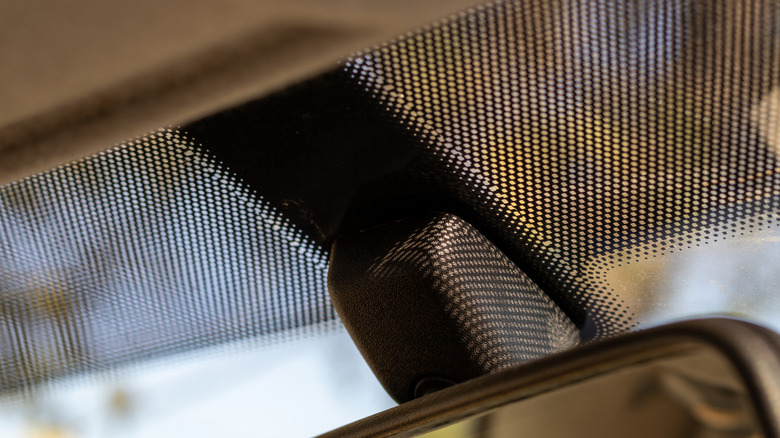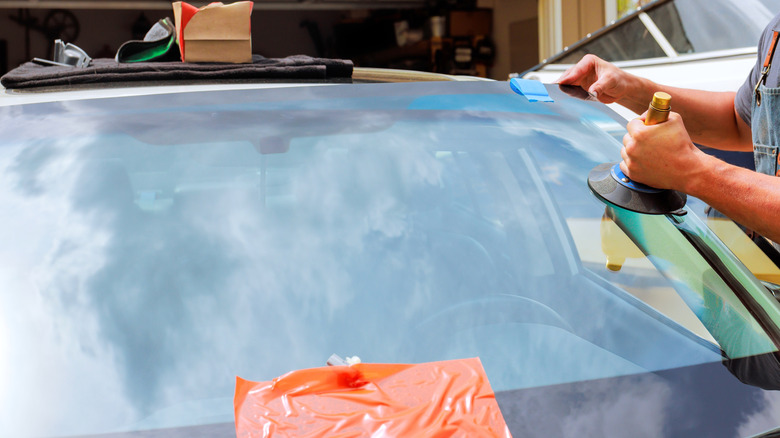What Are The Black Dots On Car Windows & Windshields For?
You've probably seen it plenty of times without giving it much thought, but that faint gradient pattern of tiny black dots on your car windows and windshield isn't just there to look cool. Those tiny black dots are called frits, or sometimes the "dot matrix," and are simply bits of enamel painted in black and baked into the glass edges during production. Here's what's even more interesting: They don't just start out as dots, but as a full black panel at the edge, before gradually fading into the small black dots you see on your windshield.
Why bake these frits into the glass? Those tiny dots help the glass bond with polyurethane adhesives and the car frame altogether. Basically, they are responsible for holding your windows and windshield in place as you cruise down the highway. If you were to look at them more closely, you'll realize they are not all the same: You may note that some are bigger and more concentrated at the window or windshield edges. This strategic placement is done to help reinforce the glass in the areas more vulnerable to damage.
More than just glue
You may not realize it, but without frits, the windshield would look weird, to say the least. There would be a stark contrast between the glass' transparency and the dark band, potentially causing optical distortion. Instead, these tiny dots provide a smoother, more gradual, and visually pleasing transition towards the clear section of the glass; reducing windshield glare and making your time behind the wheel more comfortable.
On top of that, they protect the windshield sealant from UV radiation. A study by the National Library of Medicine showed that urethane's chemical bonds weaken when exposed to UV light, lowering its molecular weight and, in turn, its effectiveness in mechanical applications. Frits on the windshield help protect the borders of the windshield where the sealant is applied.
Equally important, these dots also help distribute heat evenly across the glass when the temperature rises, reducing the risk of "lensing." The last thing you want is the windshield distorting or warping your vision of the road, just because heat has concentrated too much on one section of the glass. Distributing heat across the glass surface also reduces the risk of the windshield breaking and cracking in rare cases where there are abrupt temperature fluctuations.

